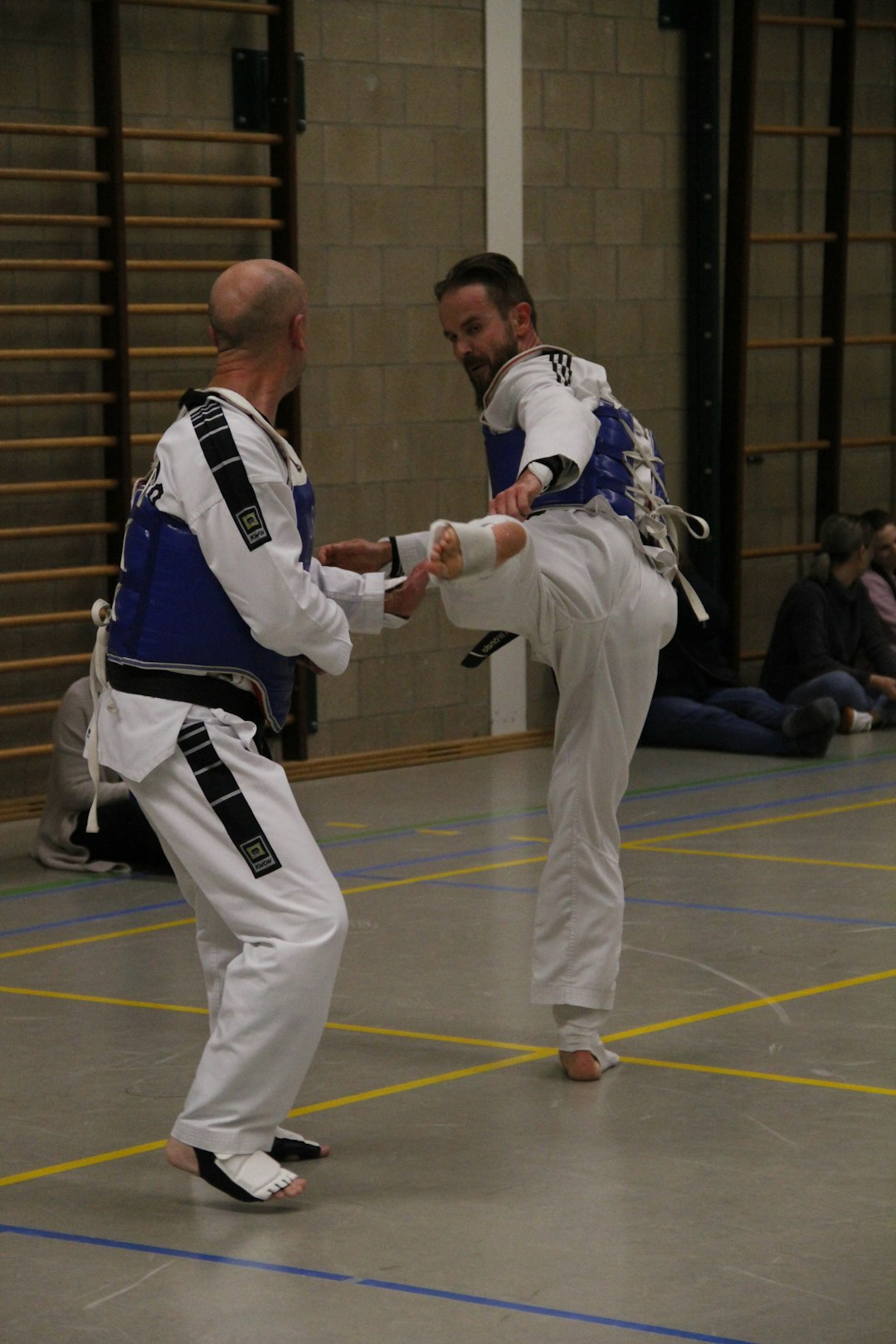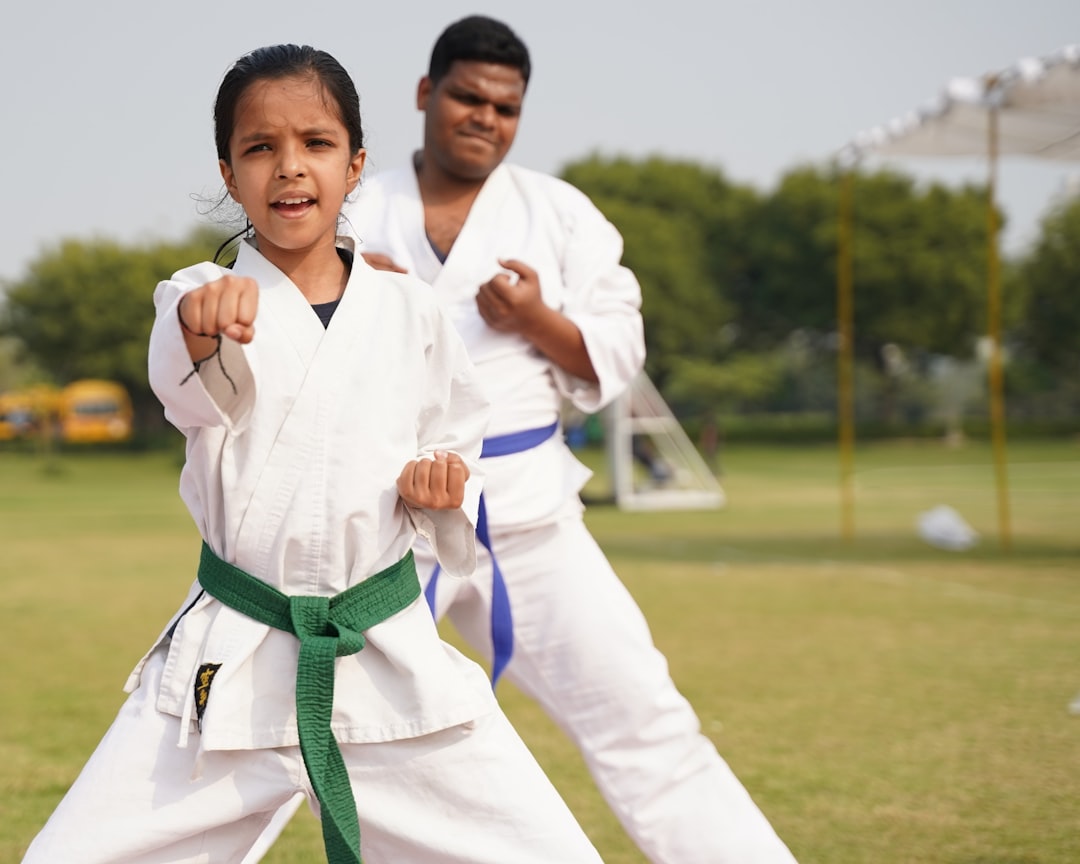The karate uniform, known as the "gi" or "keikogi," is central to the practice of karate, serving both practical and symbolic purposes. It is a traditional white cotton outfit consisting of a jacket with an obi sash and trousers, designed to facilitate fluid movements while representing the discipline's values of purity and simplicity. The gi is the standard attire for karateka worldwide, emphasizing respect for the art and equality among practitioners. Its evolution reflects a balance between traditional elements and modern demands, with improvements in materials like synthetic fibers offering enhanced performance characteristics without losing its iconic design. The uniform's name, "karategi," underscores the importance of maintaining tradition and integrity within the practice. Understanding the karate uniform name and its significance helps to appreciate the deep respect for the martial art it represents, as well as its adaptability to modern-day needs, ensuring that the essence of karate is preserved in contemporary practice.
Discerning the appropriate attire in any martial art is pivotal for practitioners and enthusiasts alike. Known colloquially as a “karate gi,” this traditional ensemble serves not only as a garb but also as a symbol of discipline and respect within the karate dojo. In our forthcoming exploration, we delve into the etymology and significance behind the term “karate uniform name,” tracing its origins and evolution to the present-day variations that continue to define the practice of this ancient martial art. Join us as we uncover the essence of karate attire and appreciate its transformation through time.
- Unraveling the Essence of Karate Attire: Defining the Karate Uniform Name
- The Evolution and Significance of Karate Gi Designs
- Key Characteristics of a Traditional Karate Outfit
- Modern Interpretations: Variations in Karate Uniforms Today
Unraveling the Essence of Karate Attire: Defining the Karate Uniform Name

When delving into the realm of martial arts, one term that frequently surfaces is “karate uniform.” But what exactly constitutes a karate uniform, and why is its designation specific to karate? The traditional garb for practitioners of this discipline is known as a “gi” or “keikogi,” which is a white cotton jacket and pants combination. This attire not only serves a practical purpose by allowing ease of movement but also carries symbolic significance, representing the purity and simplicity that karate upholds. The top, referred to as the “uppan,” is fastened at the waist with a sash called an “obi,” which, when tied, signifies the wearer’s dedication to the practice. The trousers, or “sha,” are designed for optimal range of motion during kicks and blocks. While the karate uniform name may vary in regional vernacular, the “gi” remains the quintessential attire for practitioners around the globe, embodying the discipline’s essence and tradition. Is it necessary to wear a specific type of uniform for practicing karate? Absolutely. The karate gi is not merely a set of clothes but a symbol of respect for the art and a uniform standard that promotes equality among practitioners. It is tailored specifically to facilitate the movements inherent to karate, differentiating it from other martial arts’ attire.
The Evolution and Significance of Karate Gi Designs

Karate gi, commonly known as a karate uniform, has undergone significant transformations throughout its history, reflecting both functional and cultural evolutions. Initially, practitioners of this martial art trained in simple cotton garments or loincloths. Over time, the design of the karate uniform evolved to meet the needs of the practice. What do you call a karate outfit specifically? The term “karategi” is the traditional name for a karate uniform, originating from Japan where the art form was developed. This garment is designed to facilitate movement and provide comfort during rigorous training sessions, allowing for full range of motion necessary for the various kata and kumite exercises.
The design of the karate gi also carries significant meaning, beyond its practical utility. The white color, for instance, symbolizes purity and humility, reinforcing the martial arts ethos of discipline and respect. Additionally, the simple, durable weave of the fabric signifies resilience and readiness for the challenges that come with the practice of karate. The standardized design, with its straight lines and lack of belts or ornamentation, also fosters a sense of unity and equality among practitioners, emphasizing the individual’s skill rather than external accouterments. What is the significance of the karategi beyond its function? It serves as a visual representation of the martial artist’s dedication to the discipline and a symbol of the values upheld within the practice of karate.
Key Characteristics of a Traditional Karate Outfit

When delving into the realm of traditional martial arts, one will often encounter the term “keikogi,” commonly known as a karate uniform. This garment is a staple in the practice of karate and holds significant importance within the discipline. The keikogi is characterized by its simple and functional design, intended to facilitate movement without hindering the practitioner’s performance during training or competition. It typically features a lightweight, cotton material that allows for ease of motion while providing durability. The top half of the keikogi is a jacket, or “gi,” with a belt, or “obi,” tied around the waist, complementing the matching pants, known as “bakama,” which extend to just above the ankles and are held up by a drawstring for adjustable fit. The uniform’s color often reflects the rank of the wearer, with white being the most common and symbolizing purity and humility in martial arts. What differentiates the keikogi from other martial arts uniforms is not only its simplicity but also its specific cut and proportions, designed to be form-fitting yet not too tight, ensuring unobstructed movement for various karate techniques and kata performances. Is it a white garment with a belt that you’re inquiring about? Yes, the traditional karate uniform, or keikogi, is commonly white, symbolizing the journey of the practitioner towards mastery and respect for the art of karate. The matching bakama pants, along with the obi belt, complete the ensemble, each piece contributing to the practitioner’s ability to move freely and perform at their best.
Modern Interpretations: Variations in Karate Uniforms Today

Karate, a discipline rooted in tradition, has seen its uniforms evolve over time to meet the needs of both practitioners and modern sensibilities. The karate uniform, often referred to as a gi, serves as a blank canvas for the disciplined movements and techniques that are emblematic of the martial art. Today, there are several variations in karate uniforms, each tailored to enhance mobility, comfort, and durability while maintaining the respect for the original design. What do you call a karate outfit? A traditional karate outfit is typically named a gi, which consists of a jacket and trousers made of cotton or hemp fabric, secured by a belt called an obi. Modern interpretations of this traditional garb have introduced new materials such as synthetic fibers that offer greater flexibility and breathability. These advancements ensure that the karate uniform not only withstands the rigors of practice but also adapts to the diverse climates in which karate is practiced worldwide.
The evolution of the karate gi has been influenced by both functional and aesthetic considerations. For instance, some modern karate uniforms may have a lighter weight or pre-shrunk fabric to prevent sizing changes after washing. Additionally, variations in the design of the collar and the length of the sleeves and trousers cater to different body types and provide a better fit for athletes. The question often arises: How do these modern interpretations affect the traditional aspects of the karate gi? While the core elements of the gi remain largely unchanged, the selection of materials and the refinement in design have brought about a garment that is both respectful to tradition and responsive to contemporary needs. This harmonious blend ensures that the essence of karate’s heritage is preserved while accommodating the evolving nature of the sport.
In wrapping up our exploration of the traditional and contemporary elements that constitute a karate uniform, it’s clear that the term ‘karate uniform’ is universally recognized. From its origins to its modern variations, the karate outfit—often referred to as a gi—serves not only as a practical training garment but also as a symbol of discipline and respect within the martial arts community. The evolution of its design reflects both the functional needs of the practice and the cultural significance behind each component. Whether adhering to traditional forms or embracing innovative materials, the karate uniform name remains synonymous with the martial art’s rich heritage and enduring legacy. Practitioners worldwide don this attire, affirming its importance in the continuation and celebration of karate’s traditions.
